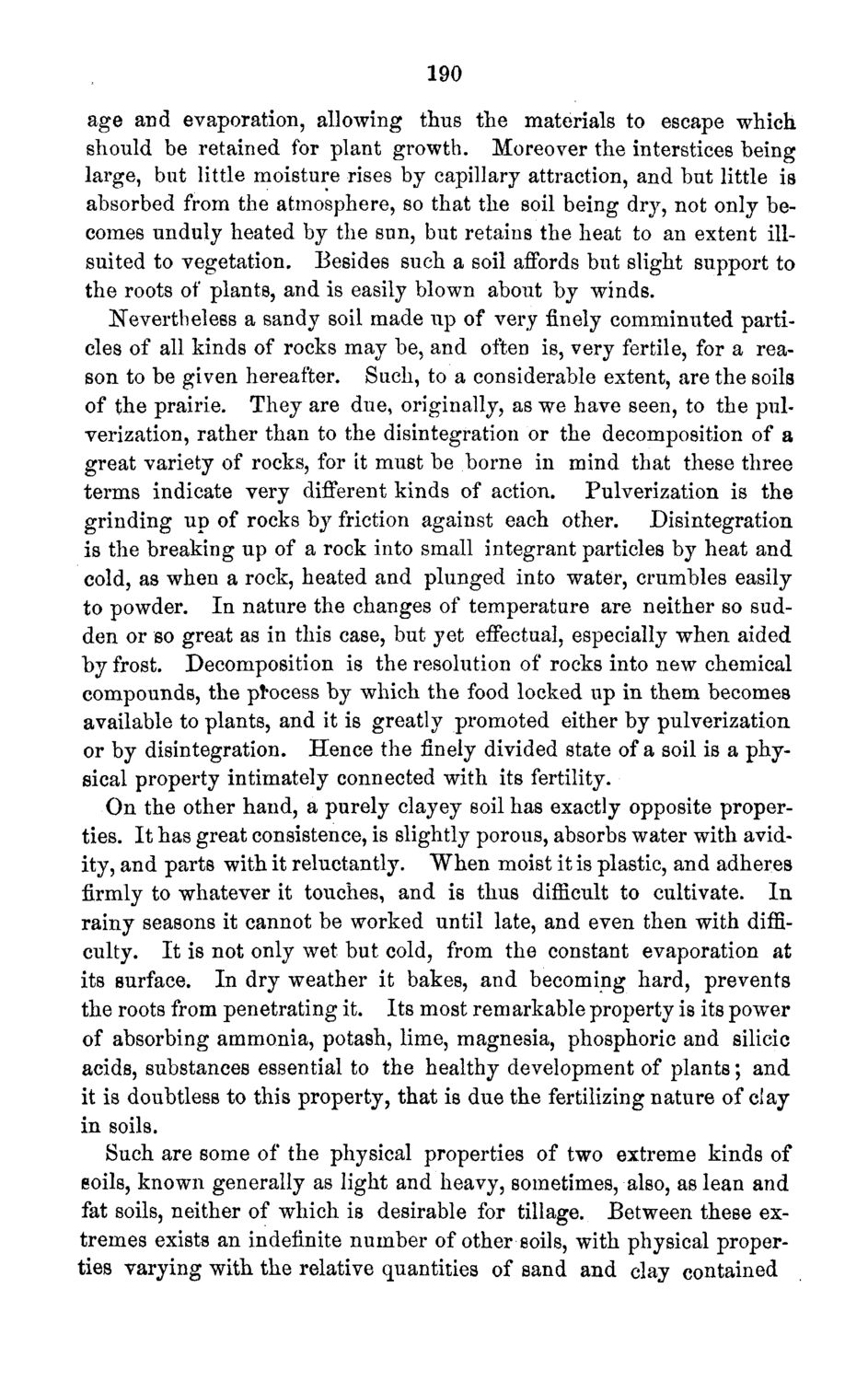| |
| |
Caption: Board of Trustees Minutes - 1871
This is a reduced-resolution page image for fast online browsing.

EXTRACTED TEXT FROM PAGE:
190 age and evaporation, allowing thus the materials to escape which should be retained for plant growth. Moreover the interstices being large, but little moisture rises by capillary attraction, and but little is absorbed from the atmosphere, so that the soil being dry, not only becomes unduly heated by the sun, but retains the heat to an extent illsuited to vegetation. Besides such a soil affords but slight support to the roots of plants, and is easily blown about by winds. Nevertheless a sandy soil made up of very finely comminuted particles of all kinds of rocks may be, and often is, very fertile, for a reason to be given hereafter. Such, to a considerable extent, are the soils of the prairie. They are due, originally, as we have seen, to the pulverization, rather than to the disintegration or the decomposition of a great variety of rocks, for it must be borne in mind that these three terms indicate very different kinds of action. Pulverization is the grinding up of rocks by friction against each other. Disintegration is the breaking up of a rock into small integrant particles by heat and cold, as when a rock, heated and plunged into water, crumbles easily to powder. In nature the changes of temperature are neither so sudden or so great as in this case, but yet effectual, especially when aided by frost. Decomposition is the resolution of rocks into new chemical compounds, the process by which the food locked up in them becomes available to plants, and it is greatly promoted either by pulverization or by disintegration. Hence the finely divided state of a soil is a physical property intimately connected with its fertility. On the other hand, a purely clayey soil has exactly opposite properties. It has great consistence, is slightly porous, absorbs water with avidity, and parts with it reluctantly. When moist it is plastic, and adheres firmly to whatever it touches, and is thus difficult to cultivate. I n rainy seasons it cannot be worked until late, and even then with difficulty. It is not only wet but cold, from the constant evaporation at its surface. In dry weather it bakes, and becoming hard, prevents the roots from penetrating it. Its most remarkable property is its power of absorbing ammonia, potash, lime, magnesia, phosphoric and silicic acids, substances essential to the healthy development of plants; and it is doubtless to this property, that is due the fertilizing nature of clay in soils. Such are some of the physical properties of two extreme kinds of soils, known generally as light and heavy, sometimes, also, as lean and fat soils, neither of which is desirable for tillage. Between these extremes exists an indefinite number of other soils, with physical properties varying with the relative quantities of sand and clay contained
| |